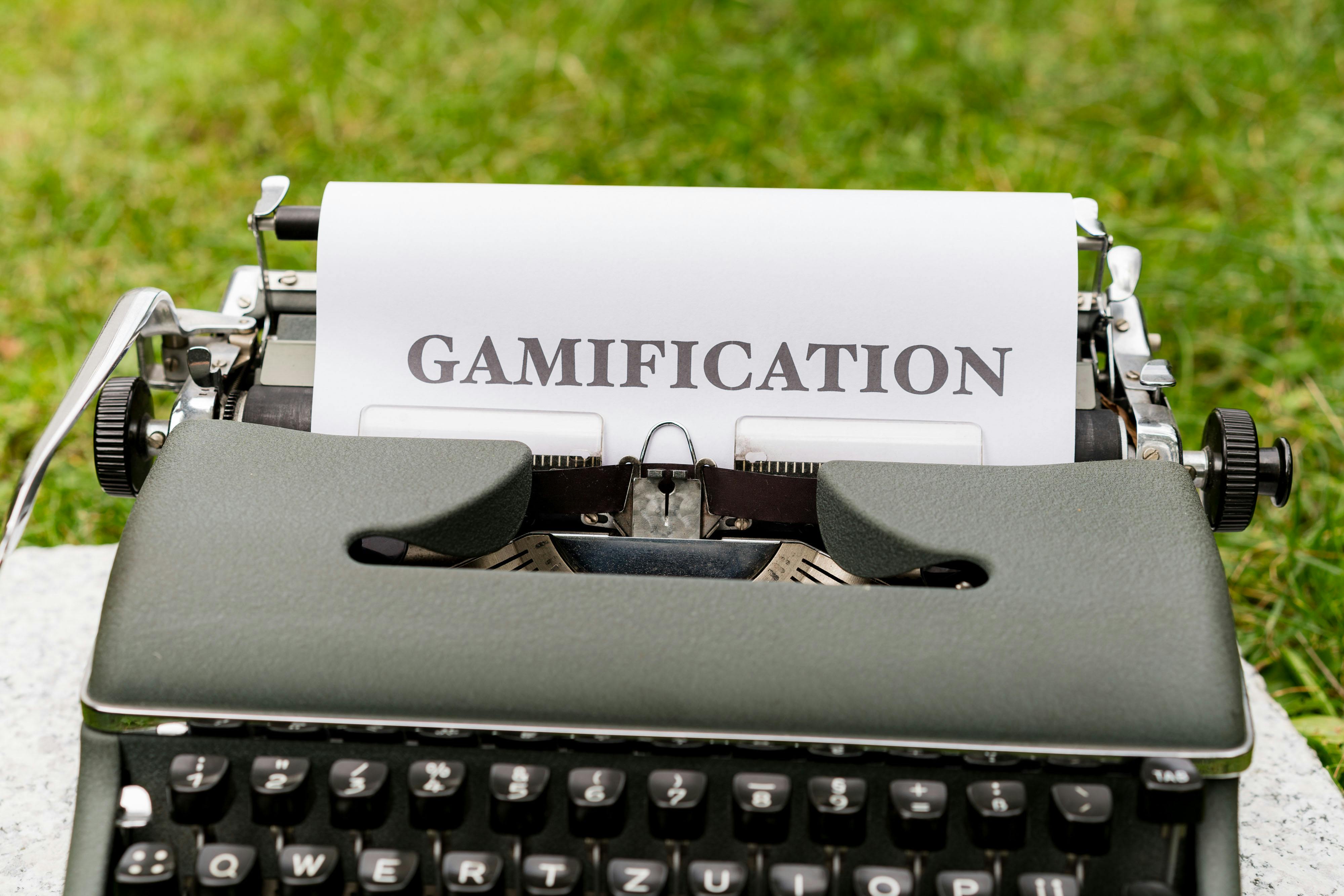Understanding Gamification
Gamification is the practice of incorporating game elements and mechanics into non-gaming contexts, such as mobile applications. It leverages the inherent human desire for competition, achievement, and rewards to enhance user engagement and motivation. By integrating game-like features, such as leaderboards, badges, and challenges, into your app, you can create a more immersive and enjoyable user experience.
What is gamification?
Gamification involves applying game design principles to non-game environments. In the context of mobile apps, it means incorporating elements like points, levels, virtual currencies, and progress tracking to motivate users and keep them coming back for more. These elements tap into users’ intrinsic motivation by offering them a sense of mastery, social interaction, and status.
Benefits of gamification in mobile apps
Implementing gamification in your app can yield numerous benefits for both users and businesses. For users, it adds an element of fun and entertainment to the app experience, making it more enjoyable and engaging. Gamified apps also foster a sense of achievement and progress, encouraging users to stay motivated and continue using the app. From a business perspective, gamification can improve user retention, increase user loyalty, and drive higher app usage, ultimately leading to improved customer satisfaction and higher revenue potential.
Examples of successful gamified apps
Several mobile apps have successfully implemented gamification to drive user engagement and achieve business goals. For instance, fitness apps like Strava and Nike+ use gamified features to encourage users to set fitness goals, compete with friends, and earn virtual rewards. In the education realm, Duolingo leverages gamification to make language learning fun and addictive, introducing challenges, levels, and achievements. Moreover, travel apps like TripAdvisor employ gamification to incentivize users to leave reviews and earn badges, fostering user participation and enhancing the app’s value. These examples demonstrate how gamification can be effectively employed across various domains to enhance the app experience and motivate users.
Designing Gamification Elements
Identifying goals and objectives
When implementing gamification in your app, it is crucial to first identify your goals and objectives. What do you want to achieve through gamification? Whether it’s increasing user engagement, improving retention, or driving specific behaviors, clearly defining your goals will help you choose the right gamification elements.
Choosing the right game mechanics
Game mechanics are the core components of gamification that drive user behavior and engagement. It’s essential to choose the right game mechanics that align with your app’s goals and target audience. From points and badges to levels and leaderboards, explore various game mechanics and select the ones that will motivate and engage your users the most.
Creating an engaging narrative
A well-crafted narrative adds depth and context to your app’s gamification elements, making it more engaging for users. Tell a story that unfolds as users progress, providing them with a sense of purpose and progression. Whether it’s a fantasy-themed adventure or a real-world challenge, an engaging narrative can capture users’ attention and keep them coming back for more.
By carefully designing your app’s gamification elements, you can create an immersive and enjoyable user experience. Identify your goals, choose the right game mechanics, and craft an engaging narrative to maximize the impact of gamification in your app.

This image is property of images.pexels.com.
## Engaging User Experience
Creating a visually appealing interface is crucial in engaging users with your mobile app. Ensure that the design is clean, intuitive, and visually appealing. Use eye-catching colors, images, and icons that align with your app’s theme and purpose. An interactive and attractive design will capture users’ attention and make their experience more enjoyable.
Incorporating rewards and incentives
One effective way to keep users engaged is by incorporating rewards and incentives within the app. Offer points, badges, or virtual currency for completing tasks, achieving milestones, or reaching certain levels. Users will feel a sense of achievement and be motivated to continue using the app. Additionally, consider offering exclusive offers, discounts, or special privileges to further incentivize users.
Implementing leaderboards and social features
Integrating leaderboards and social features adds a competitive element to your app, encouraging users to engage with each other and strive for higher rankings. Displaying the top performers on leaderboards creates a sense of competition and allows users to compare their progress with others. Social features, such as the ability to share achievements on social media or invite friends to join, can enhance user engagement and promote app usage.
By creating a visually appealing interface, incorporating rewards and incentives, and implementing leaderboards and social features in your mobile app, you can enhance the user experience and encourage continued use of your app.

This image is property of images.pexels.com.
## Gamifying User Onboarding Implementing gamification in your app can greatly enhance the user experience and increase engagement. One crucial aspect of gamification is the onboarding process, which determines how effectively users are introduced to and engaged with your app. By gamifying user onboarding, you can make it more interactive, engaging, and enjoyable for your users.
Making the onboarding process interactive
Instead of a traditional, linear onboarding process, consider incorporating interactive elements that encourage user participation. For example, you can design mini-games or quizzes that educate users about the app’s features and functionality. This interactive approach not only enhances user understanding but also makes the onboarding process more enjoyable.
Using tutorials and guided experiences
Another effective way to gamify user onboarding is by providing step-by-step tutorials and guided experiences. By breaking down complex tasks into manageable chunks and guiding users through each step, you can make the onboarding process less overwhelming. This not only boosts user confidence but also makes them more likely to continue using your app.
Providing feedback and progress tracking
To keep users engaged during onboarding, it’s important to provide feedback and track their progress. By offering real-time feedback, such as achievements or badges, you can motivate users to complete onboarding tasks. Additionally, progress tracking features, such as progress bars or level indicators, allow users to visualize their advancement, providing a sense of accomplishment and driving them to continue using your app.
Incorporating gamification into the onboarding process can effectively engage and educate your users, setting the stage for continued app usage and improved user satisfaction.

This image is property of images.pexels.com.
## Implementing Progress Tracking
One of the key elements in gamifying your mobile app is implementing progress tracking. Tracking user actions and achievements not only enhances user engagement but also provides a sense of accomplishment and motivation. By integrating levels and badges, you can create a sense of progression and reward for users as they complete tasks and reach milestones.
Tracking user actions and achievements
Implementing progress tracking begins with tracking user actions and achievements. You can identify specific actions or goals within your app that users need to complete, such as completing a level, unlocking a new feature, or earning points. By tracking these actions and achievements, you can provide users with a clear sense of progress and encourage them to continue using the app.
Integrating levels and badges
Levels and badges are effective gamification mechanics that can make your app more engaging. By integrating levels, users can gradually progress through different stages and challenges, unlocking new features or content along the way. Badges, on the other hand, can be awarded to users as they accomplish specific tasks or milestones. These virtual rewards serve as incentives and recognition for their efforts, further motivating them to explore and engage with your app.
Displaying progress bars and milestones
Visual indicators such as progress bars and milestones are effective tools for displaying user progress. Progress bars visually show users how far they have come in completing a task or reaching a goal. Milestones, on the other hand, mark significant achievements or milestones that users have accomplished. By displaying these visual cues, you can not only inform users of their progress but also motivate them to continue their journey and strive for completion.
Incorporating progress tracking into your mobile app gamification strategy can greatly enhance user engagement and motivation. By tracking user actions and achievements, integrating levels and badges, and displaying progress bars and milestones, you can provide users with a sense of progress, reward, and accomplishment, making your app more enjoyable and immersive.
Balancing Game Mechanics
Gamification has become a popular strategy for mobile app developers to enhance user engagement and maximize their app’s success. However, finding the right balance in implementing game mechanics is crucial to ensure a positive user experience.
Avoiding excessive gamification
While it’s tempting to incorporate gamification elements throughout your app, excessive use can overwhelm users and distract them from the app’s intended purpose. It’s important to strike a balance between providing fun and interactive elements, without compromising on functionality and usability. Assess which features truly enhance the user experience and focus on those, rather than inundating users with unnecessary game mechanics.
Ensuring a fair and challenging experience
To keep users engaged, it’s essential to create a fair and challenging experience within your app. Balance the difficulty level of tasks, rewards, and achievements to avoid frustration or monotony. Consider using analytics tools to track user progress and adjust the difficulty accordingly. Additionally, implement leaderboards or other competitive features to motivate users to continuously improve their performance.
Addressing user feedback and suggestions
Listening to user feedback is crucial for successful gamification implementation. Regularly monitor reviews, conduct surveys, and encourage users to provide suggestions. Incorporate user feedback into updates and improvements, addressing any concerns or requests. Engaging with your users not only helps you refine the gamification elements, but also fosters a sense of community and loyalty among your user base.
By balancing game mechanics effectively, you can create a captivating and enjoyable app experience that keeps users coming back for more.
Monetizing Through Gamification
Gamification in mobile apps not only enhances user engagement and retention but also provides opportunities for monetization. Implementing gamification features can help you generate revenue and turn your app into a profitable venture. Here are some effective ways to monetize through gamification:
Implementing in-app purchases
Allow users to make in-app purchases to unlock additional levels, features, or virtual goods within your game. This approach can create a sense of exclusivity and encourage users to spend money to enhance their gaming experience. Offer different purchase options, such as packs or bundles, to cater to a range of user preferences and budgets.
Offering premium gamified content
Provide users with the option to access premium gamified content for a fee. This could include unique game modes, advanced levels, or exclusive in-game rewards. Offering a paid subscription model can ensure a steady stream of revenue and keep users invested in your app.
Utilizing ads and sponsorships
Integrate advertisements strategically within your gamified app to generate revenue. Display banner ads, interstitial ads, or video ads at appropriate intervals without disrupting the gameplay. Additionally, consider partnering with sponsors to promote their products or services within your game. This can be done through sponsored levels, branded virtual goods, or even in-game events.
By implementing these monetization strategies, you can transform your gamified app into a profitable venture while still providing an enjoyable and engaging experience for your users.
Introduction
In order to ensure the success of your mobile app gamification strategy, it is crucial to regularly measure and analyze the impact of your gamification elements. This will allow you to understand how users are engaging with your app and make data-driven decisions to improve their experience.
## Defining key performance indicators
To determine whether your gamification efforts are effective, it is important to define key performance indicators (KPIs) that align with your overall goals. These could include metrics such as user retention, user engagement, conversion rates, and social sharing. By establishing clear KPIs, you can track and measure the impact of your gamification elements.
Collecting and analyzing user data
In order to measure the success of your gamification strategy, you need to collect and analyze relevant user data. This can include information such as user interactions, behaviors, and preferences. By leveraging tools like analytics platforms and user feedback, you can gain valuable insights into how users are engaging with your app and identify areas for improvement.
Iterating and improving gamification elements
Once you have collected and analyzed user data, it is important to iterate and improve your gamification elements based on the insights gained. This could involve tweaking game mechanics, adjusting rewards, or introducing new challenges. By continually testing and refining your gamification strategy, you can ensure that it remains engaging and effective for your users.
By measuring and analyzing the success of your gamification elements, you can continuously improve your mobile app and enhance the overall user experience. Through careful tracking of key performance indicators and the collection of user data, you can gain valuable insights and make informed decisions to optimize your gamification strategy.
Overcoming Challenges
Mobile app gamification can be a powerful tool to engage and retain users, but implementing it in your app can come with its own set of challenges. This section will discuss three key challenges you may face and provide strategies to overcome them.
Assessing technical feasibility
Before incorporating gamification elements into your app, it is crucial to assess the technical feasibility. Consider the compatibility of your existing infrastructure with the desired gamification features. Evaluate if your app’s framework can handle the increased processing and storage demands. If technical limitations arise, explore alternative solutions or consider upgrading your app’s infrastructure to support gamification.
Considering cultural and ethical implications
Gamification can have cultural and ethical implications that may impact user experience. Different cultures may have varying responses to gamified elements, and certain mechanics may be seen as exploitative or disrespectful. Conduct thorough research and user testing to ensure that the gamification elements align with your target audience’s cultural preferences and ethical standards.
Dealing with user resistance or disengagement
Resistance or disengagement from users can pose a challenge when implementing gamification. To address this, communicate the benefits and purpose of gamified features clearly to your users. Offer rewards that are meaningful and aligned with user motivations. Continuously monitor user feedback and iterate on the gamification elements based on their preferences to foster user engagement.
By overcoming these challenges, you can successfully implement gamification in your app and enhance user satisfaction and retention.
Gamification Trends and Innovations
Gamification is a powerful technique for enhancing user engagement and driving app success, and staying up-to-date with the latest gamification trends and innovations is essential for developers. Here are three exciting areas to explore:
Using augmented reality in mobile app gamification
Augmented reality (AR) has taken the gaming industry by storm, offering a unique and immersive user experience. By integrating AR features into your app, you can create interactive and captivating gameplay that blends the virtual and real worlds. Whether it’s a treasure hunt in a real-world environment or battling virtual creatures in your living room, AR opens up endless possibilities for engaging your users.
Integrating machine learning and personalization
Machine learning algorithms can analyze user data to deliver personalized experiences and tailored gaming challenges. By incorporating machine learning into your app, you can create dynamic gameplay that adapts to each user’s preferences, skills, and progress. This level of personalization not only enhances user engagement but also increases the chances of app retention and monetization.
Exploring gamification in educational apps
Gamification has proven to be a powerful tool in the education sector, making learning more fun and interactive. By incorporating gamification elements, such as points, badges, and leaderboards, into educational apps, you can motivate and engage students, making the learning process more enjoyable and rewarding. This approach encourages students to actively participate and enhances their retention of knowledge.
In conclusion, embracing these gamification trends and innovations can greatly enhance your mobile app’s user engagement and overall success. By leveraging the power of augmented reality, machine learning, and gamification in educational apps, you can create a truly immersive and personalized experience for your users.

2 replies on “Mobile App Gamification: Implementing Gamification In Your App”
[…] By obtaining user consent and providing transparency about data collection, usage, and sharing, you can foster trust and demonstrate your commitment to protecting user privacy in your mobile app. […]
[…] coding practices are crucial to prevent security vulnerabilities in your mobile app. Developers should follow industry-standard secure coding guidelines, such as OWASP Mobile Top 10, […]